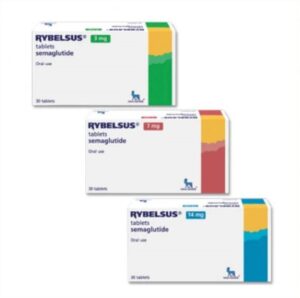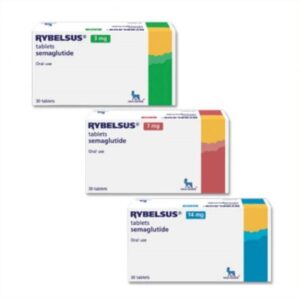Ozempic
Visualizzazione di 2 risultati
Visualizzazione di 2 risultati
Introduction:
Managing type 2 diabetes requires a comprehensive approach that often includes lifestyle modifications and medication. One such medication that has gained significant attention in recent years is Ozempic (semaglutide). Ozempic belongs to a class of drugs called glucagon-like peptide-1 receptor agonists (GLP-1 agonists) and has shown promising results in helping individuals with type 2 diabetes achieve better glycemic control. In this blog, we will explore the benefits, usage, and considerations of Ozempic as a valuable treatment option for type 2 diabetes.
What is Ozempic?
Ozempic, also known by its generic name semaglutide, is a prescription medication approved for the treatment of type 2 diabetes in adults. It is an injectable medication that works by mimicking the effects of a naturally occurring hormone called glucagon-like peptide-1 (GLP-1). By activating GLP-1 receptors, Ozempic helps regulate blood sugar levels in several ways. It increases insulin secretion, decreases the production of glucagon (a hormone that increases blood sugar), and slows down the emptying of the stomach.
Benefits of Ozempic:
Improved Blood Sugar Control: Ozempic has demonstrated its effectiveness in lowering blood sugar levels in individuals with type 2 diabetes. Clinical studies have shown that it can significantly reduce HbA1c levels, a measure of long-term blood glucose control.
Weight Management: Ozempic has an additional benefit of promoting weight loss. Many individuals with type 2 diabetes struggle with excess weight, which can contribute to insulin resistance. Ozempic helps address this concern by reducing appetite and promoting a feeling of fullness, leading to gradual and sustainable weight loss.
Cardiovascular Benefits: Recent studies have shown that Ozempic has cardiovascular benefits. It has been associated with a reduced risk of major adverse cardiovascular events, such as heart attack, stroke, and cardiovascular death. This makes it an attractive option for individuals with type 2 diabetes who are at a higher risk of developing cardiovascular complications.
Usage and Administration:
Ozempic is typically administered as a once-weekly subcutaneous injection. The recommended starting dose is 0.25 mg, which can be gradually increased to 0.5 mg after four weeks, and then to 1 mg after an additional four weeks, based on individual response and tolerability. It is important to follow the dosage instructions provided by your healthcare professional and not exceed the prescribed dose.
Considerations and Precautions:
While Ozempic can be a valuable medication for managing type 2 diabetes, there are a few considerations to keep in mind:
Prescription Requirement: Ozempic is a prescription medication and should only be used under the guidance of a healthcare professional. Consultation with your doctor is essential to determine if Ozempic is suitable for your specific condition.
Side Effects: Like any medication, Ozempic may cause side effects. Common side effects include nausea, vomiting, diarrhea, and constipation. Most of these side effects are temporary and diminish over time. However, it is important to discuss any concerns or persistent side effects with your doctor.
Hypoglycemia: While Ozempic itself has a low risk of causing hypoglycemia (low blood sugar), combining it with other medications that lower blood sugar, such as insulin or sulfonylureas, may increase the risk. Close monitoring of blood sugar levels is important to avoid potential complications.
Conclusion:
Ozempic (semaglutide) has emerged as a breakthrough medication for individuals with type 2 diabetes. By effectively regulating blood sugar levels, promoting weight loss.




